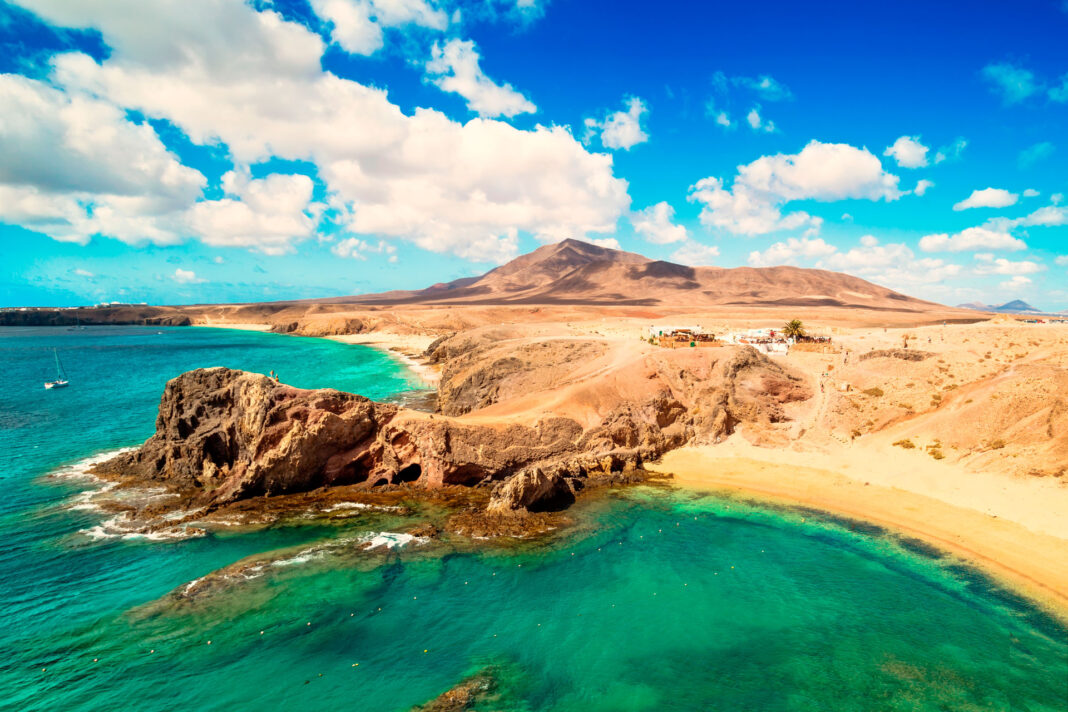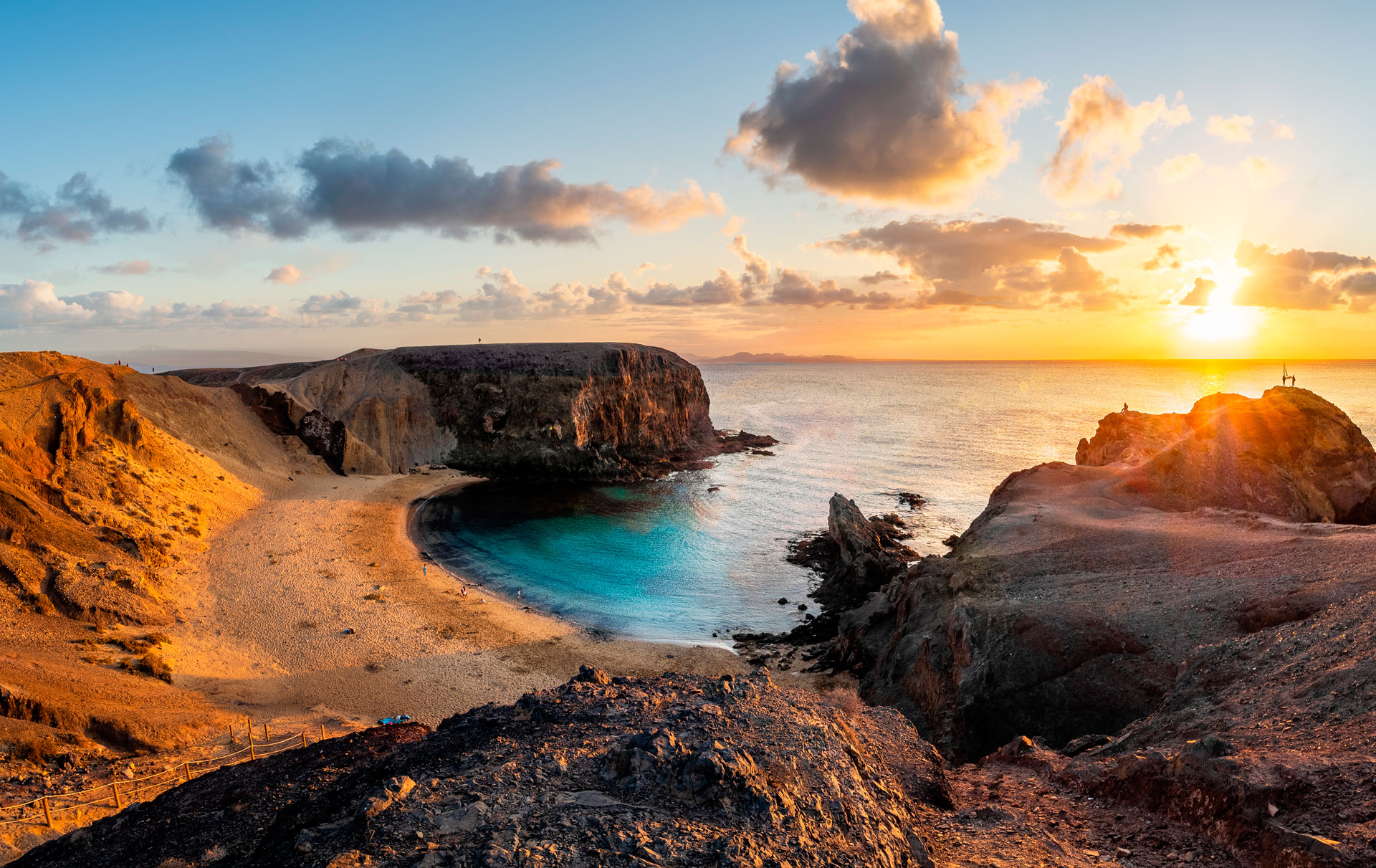Papagayo is one of Lanzarote’s natural treasures. This series of beautiful wild beaches can be found in the south of the island beyond a desert-like wasteland at the foot of Los Ajaches, the oldest volcanoes on Lanzarote. Visitors are greeted by stunning golden sandy coves and crystal-clear waters flanked by ancient volcanic cliffs on one side and the Atlantic Ocean on the other – a hidden gem.
Papagayo is just a stone’s throw from Playa Blanca, the tourist resort in the south, which not only boasts a marina and a commercial port, but also an excellent range of hotels, restaurants and leisure facilities and a seafront promenade that stretches along 11 km of coastline. When approaching the coves from Playa Blanca you’ll first come across Playa Mujeres, then Caletón del Cobre, followed by Caletón de San Marcial, Playa del Pozo, Playa de la Cera, Playa de Papagayo, Caleta del Congrio and Puerto Muelas. These virtually unspoilt natural beaches are one of Lanzarote’s most popular attractions. The only manmade intervention are the dirt tracks that lead to each of the beaches in the Los Ajaches Natural Monument (1994), the campsite managed by the Cabildo (Island Council), a restaurant and an entry checkpoint that registers vehicles entering the protected territory.
Apart from being enormously special because of its natural beauty, it also appeals to ramblers and runners who can make the most of its network of trails with ten different routes through the park, three of which include the beach area (yaiza.es/rutas-de-interes). It is also home to an important archaeological site called San Marcial del Rubicón that dates back to 1402 as the first European (Norman) enclave in the Canary Islands. It consists of five wells, a temple floor and a tower. The latest excavation work in the area aims to gain greater insight into how the original islanders lived. Fossil beaches can be found at various heights as well as dunes and dykes and the spectacular eleven million-year-old rock wall that crowns Papagayo cove.
It is also worth mentioning Papgayo’s geological importance as, together with Famara, this volcanic massif was the first land to emerge from the ocean some 15 million years ago. The highly eroded south-southeast face may have once reached a height of 4,000 metres.




